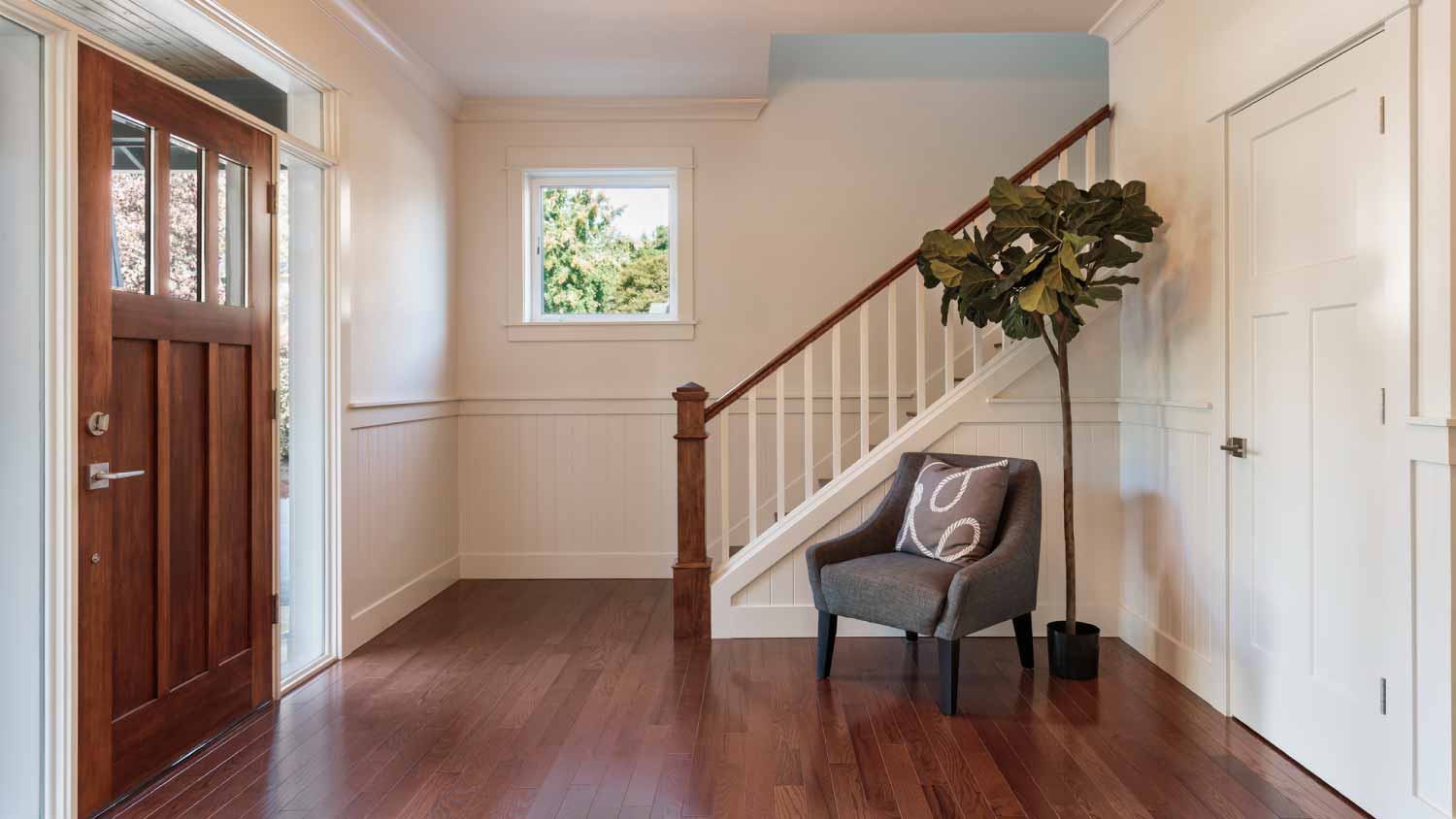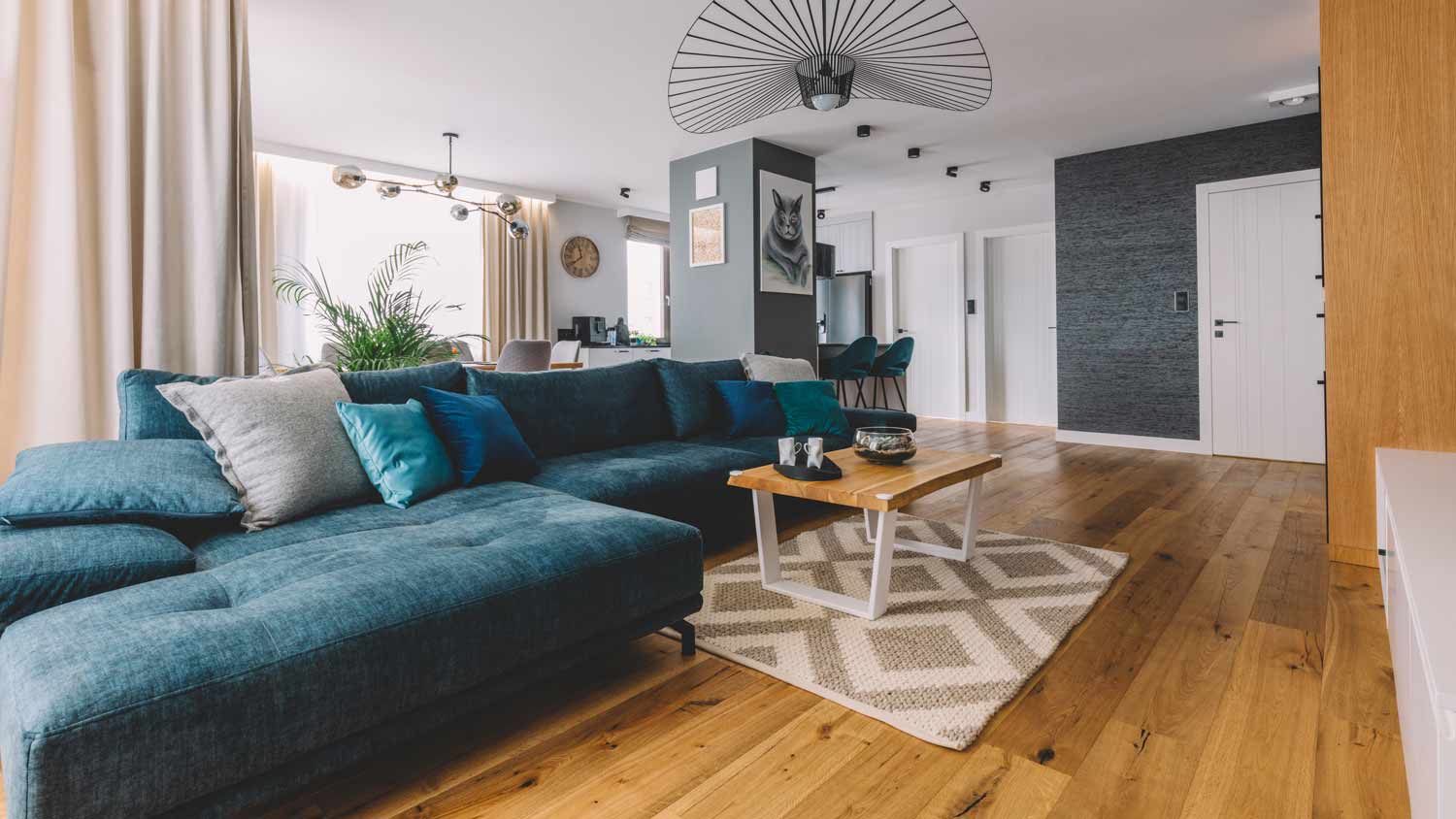How to Acclimate Laminate Flooring for the Best Results
Let your flooring rest for a few days before putting it to work


Though it can be hard to resist the temptation of installing laminate flooring the moment it arrives at your door, you will thank yourself for taking a beat. Giving this material a bit of time to rest ensures that it will be easier to put together and more likely to serve you and your home for longer. Find out exactly why you need to acclimate laminate flooring before installing, plus all the other steps you need to take to give it the treatment it deserves.
Why Does Laminate Flooring Need to Be Acclimated?
Laminate flooring is made of a fiberboard core that is extremely porous and highly sensitive to shifts in temperature or humidity. High humidity levels and temperatures cause it to expand, while lower temperatures and humidity levels cause it to shrink.
Laminate flooring endures various climate changes during the shipping process, so it will need some time to adapt to your home before it is ready to be installed. You may run into difficulties if the planks have shrunk or swollen when you try to install them. And if you do not allow them to acclimate, you may unsuspectingly install too little, too much, or accidentally break the locking mechanisms in the process. Even if you manage to install it without significant problems, you are more likely to pay for costly laminate flooring repairs like warping or cracking over time. If you have invested in the cost to install laminate flooring, it is a good idea to take measures to protect your new floors.
6 Steps to Acclimate Floor Laminate Before Installation

Along with allowing your floor laminate to rest, you need to take a few other steps to guarantee a smooth installation.
1. Read the Manufacturer’s Instructions
This is an essential step for every installation project, including laminate flooring. The manufacturer’s instructions will give you details for how to acclimate laminate flooring properly and should be followed prior to installation.
2. Find the Right Spot for Acclimating Floor Laminate
For floor laminate to acclimate properly, it is essential to let it rest in an area that will not be affected by any other environmental conditions. Place laminate in the center of the room where it will be installed, boxes laid side by side, and away from any walls to avoid humidity that might be hidden inside of them. Resist the temptation to unpack each box and let them rest in the cardboard and plastic for at least 48 hours or the amount of time recommended in the manufacturer’s instructions.
3. Check Your Subfloor’s Moisture Levels
The moisture level of the subfloor can affect the quality of the installation and the longevity of the laminate flooring. To check the moisture level on a wood subfloor, use a two-prong moisture meter and check in different areas around the room. To ensure proper installation, the moisture level should be below 12%. For concrete subfloors, use a calcium chloride moisture test kit or a concrete moisture meter to determine the level. Check the manufacturer’s instructions to determine the appropriate level for different subfloor types.
4. Regulate the Temperature and Humidity in Your Home
The best temperature for acclimating floor laminate is between 64 and 86 degrees Fahrenheit (18 and 30 degrees Celsius), and humidity levels should be between 25% and 75%. Not sure how to take these measurements? Hire an HVAC professional in your area to give you the rundown, including making sure that your subfloor is also moisture-controlled. Or invest in the necessary tools—like a thermometer or a humidity tracker—to find out all the stats yourself. Fortunately, there are plenty of cost-effective ways to control humidity levels in your home.
5. Let Laminate Rest for at Least 48 Hours Before Installing
Most laminate flooring needs approximately 48 hours to acclimate fully to a new environment. In some cases, such as when you are experiencing extreme temperatures, it may even need up to 72 hours. Manufacturers recommend between one to three days and no maximum, so when in doubt, wait it out. This time can also allow for off-gassing, which reduces any toxicity of laminate flooring.
6. Save Painting Projects for Later
Avoid installing laminate flooring in a freshly painted or plastered room because of all the humidity these projects can create. Plan painting projects either in advance or after to ensure that this external factor has no impact on the way your new floor turns out.
Tips to Ensure Your Laminate Flooring Acclimates Properly
To ensure your laminate floor acclimates properly, consider these tips:
Place unopened packages of laminate flooring in the middle of the room where they will be installed.
Lay them flat or stack them in a grid pattern to avoid warping.
Let them sit for at least 48 hours, so they can adjust to the room’s climate.
Do not install laminate flooring in a room that was just painted or plastered because the humidity levels can fluctuate.
There is no maximum amount of time that laminate flooring can acclimate, so you can wait as long as you want before installation.
Make sure to follow the manufacturer’s instructions.
Check the moisture level of the subfloor.
DIY Laminate Flooring Installation vs. Hiring a Pro
Installing laminate flooring is a relatively straightforward process that can be a DIY project—if you prepare properly. You will need a few tools, including a saw, laminate flooring installation kit, tape measure, and a multitool. It takes some practice to get the hang of cutting and positioning the boards, so if you are doing it yourself, you may want to order a little extra to account for any mistakes.
Depending on the size of the room, installing laminate flooring can take a few days, but this project is not generally time-sensitive, so you could start one day and then come back to it a few days later if needed. If you want the project completed quickly, you can hire a local laminate floor installer who can take care of the installation while you go about your business.
Frequently Asked Questions
Laminate flooring should be stacked horizontally and laid flat to avoid any warping or stress to the boards. To stack it, you should do so in a grid with each row of flooring packages positioned at a 90-degree angle to the layer beneath it. This will provide the best support so the flooring will not sag in the middle.
Acclimating laminate flooring cannot be rushed. Laminate flooring needs at least 48 hours to acclimate properly to its new environment, and being patient during this time can make installation go smoother because you will not be dealing with boards that have expanded or contracted during the shipping process. You will also be less likely to damage the boards during installation.
Laminate flooring is susceptible to expansion and contraction during temperature fluctuations. In the summer, laminate flooring is more likely to expand, possibly giving it a crowned or warped look. In the winter, when temperatures fall, the flooring can contract, revealing gaps between the boards. This is normal and should be expected when you install laminate flooring.

.jpg?impolicy=leadImage)



- Top 15 Tips for Installing Laminate Flooring Like a Pro
- Can You Paint Laminate Flooring for a Home Upgrade? Don’t Start Until You Read This
- Everything You Need to Know About Laminate Flooring
- How to Dispose of Laminate Flooring Quickly and Safely
- How Long Does Laminate Flooring Last? What to Know Before Installing or Replacing Your Flooring
- How to Repair Laminate Flooring: A Complete DIY Guide
- How to Cut Laminate Flooring: A Complete Guide
- Laminate Countertop Pros and Cons
- Laminate vs. Vinyl Flooring: Pros, Cons, Costs, and More
- Finding and Fixing Mold Under Laminate Flooring










